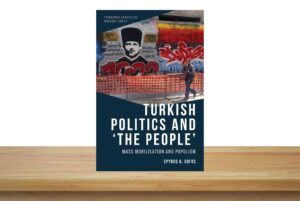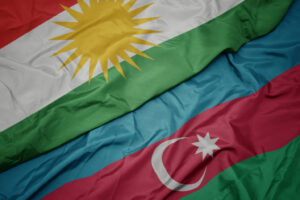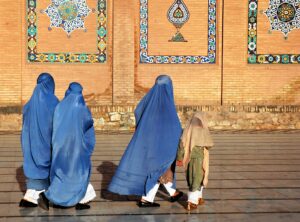Contested Lands mainly focuses on Middle Eastern political and military history to the detriment of the profound socioeconomic changes experienced by the region in the last century.
His geographical delimitation offers one major advantage: it allows the author to be concise, as he covers in less than 250 pages the major events that have shaped his area of study during the last century. Fraser’s erudition shines as he transitions seamlessly between decades and countries. It must be noted, however, that Contested Lands mainly focuses on Middle Eastern political and military history to the detriment of the profound socioeconomic changes experienced by the region in the last century such as the increased religious fundamentalism, urbanisation and the emergence of rentier economies. Furthermore, the regional reverberations of watershed moments such as the founding of a secular republic in Turkey in 1923, the struggles against French colonialism in Northern Africa or the Islamic Revolution in Iran receive scant attention because of the author’s limited geographical focus.
Fraser’s book is particularly strong in its exploration of the First World War in the Middle East and the two ensuing decades. This does not come as a surprise if we consider that Fraser is the biographer of Chaim Weizmann — a key personality in the Zionist movement at that time — as well as the editor of the volume The First World War and its Aftermath: The Shaping of the Middle East.[ii]Fraser writes that on the eve of the First World War the critical question was “how the relationship between the Turks and their Arab subjects would develop.”[iii] The implosion of the Ottoman Empire in 1918 would accelerate European involvement in the affairs of the Middle East.
Nowhere was this influence clearer than in the establishment of a British mandate in Palestine that incorporated the Balfour Declaration. In 1917, United Kingdom’s Foreign Secretary Arthur Balfour addressed a letter to Lord Rothschild, a leading Zionist, in which he promised a “national home for the Jewish population” with the caveat that “nothing shall be done which may prejudice the civil and religious rights of existing non-Jewish communities in Palestine.”[iv] No land would be more contested in the following century than Palestine.
In Fraser’s account, the Middle East too often features as an object rather than a subject.
Contested Lands places particular emphasis on the role of external powers — at first France and the United Kingdom, later the United States and the Soviet Union — in the region. In Fraser’s account, the Middle East too often features as an object rather than a subject. A paradigmatic example of this problematic approach, which denies agency to the region’s peoples, is the author’s assertion that “as a result of Kissinger’s efforts, much of the Middle East enjoyed a measure of stability after the major wars of 1967 and 1973.”[v]
Israel’s success in the 1948 war “permanently changed the dynamic of the Middle East.”
Contested Lands devotes enormous attention to the Arab-Israeli conflict. The foundation of Israel and the new state’s wars against its Arab neighbors have decisively shaped the region. Fraser is undoubtedly right in asserting that Israel’s success in the 1948 war “permanently changed the dynamic of the Middle East.”[vi] This notwithstanding, the reader is likely to be left with the impression that the book would have been better balanced if the internal dynamics in Arab countries in the post-Second World War era had been further discussed on their own right. It is often the case that Arab countries’ internal politics are only addressed inasmuch as they are related to the Arab-Israeli conflict.
Furthermore, Fraser’s description of the Arab-Israeli conflict lacks a certain nuance on certain occasions. For instance, the author subscribes to the thesis that the 2000 Camp David Summit between US President Bill Clinton, Israeli Prime Minister Ehud Barak, and Palestinian Authority Chairman Yasser Arafat did not come to a successful conclusion due to the Palestinian leader’s intransigence. To be fair, this narrative actually represents the Israeli-American version of the events. The Palestinians argue instead that they were ready to negotiate at Camp David despite Israel’s unwillingness to remove many of the pillars cementing the occupation of Palestinian lands. According to University of Connecticut Professor Jeremy Pressman, “neither the Israeli nor the Palestinian version of the events at Camp David and subsequent talks is wholly accurate. The Palestinian version, however, is much closer to the evidentiary record.”[vii]
The reader searching for a comprehensive account of modern Middle East history should better opt for Eugen Rogan’s The Arabs: A History or Peter Mansfield’s A History of the Middle East, updated by Nicholas Pelham in recent editions after Mansfields’s death.[viii] They both cover a longer time period and have a broader geographical range than Contested Lands. Fraser’s latest book, however, is a welcome addition to the literature on Middle East history and will serve as an introductory volume for undergraduate students and general readers seeking to learn more about the region’s history and the role Western countries have played in it.
[i] Roderic H. Davison, “Where Is the Middle East,” Foreign Affairs 38 (1959): 665.
[ii] Burcin Cakir, “The First World War and Its Aftermath: The Shaping of the Middle East,” First World War Studies 9, no. 3 (2018): 374–75.
[iii] T.G. Fraser, Contested Lands. A History of the Middle East since the First World War (London: Haus Publishing, 2021), p. 15.
[iv] Yolande Knell, “Balfour Declaration: The Divisive Legacy of 67 Words,” BBC News, February 11, 2017, https://www.bbc.com/news/world-middle-east-41765892.
[v] Fraser, Contested Lands, p. 171
[vi] Ibid., p. 119.
[vii] Jeremy Pressman, “Visions in Collision: What Happened at Camp David and Taba?” International Security 28, no. 2 (2003): 6.
[viii] Edmund Burke, “Review: Middle Eastern History and World History,” Journal of World History 3, no. 2 (1992): 257–62; Robert Irwin, “The Arabs: A History by Eugene Rogan,” The Guardian, October 31, 2009, https://www.theguardian.com/books/2009/oct/31/arabs-eugene-rogan-robert-irwin.

















